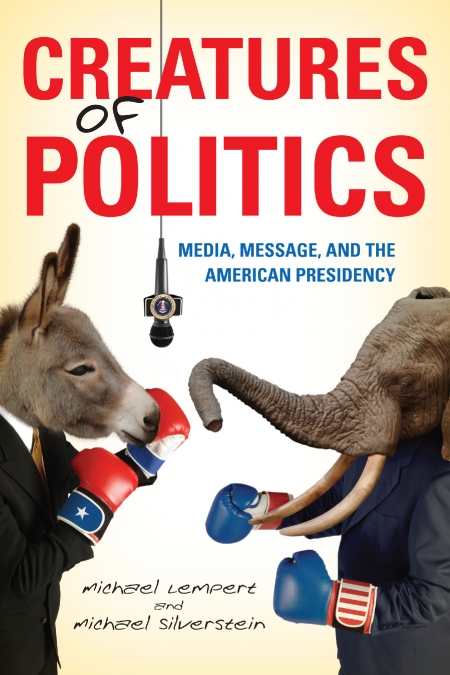
Creatures of Politics
Media, Message, and the American Presidency
In modern American electoral politics, “message” has become a convenient shorthand term for both the narrative a politician tries to convey and the verbal and body language he or she uses to convey it. Whether George H.W. Bush’s famously tone-deaf announcement of “Message: I care” or pundits’ analysis of candidates’ ability to stay “on-message,” this notion of message has become one of the ways politicians are defined by themselves and others.
In Creatures of Politics, anthropology professors Michael Lempert and Michael Silverstein analyze a series of examples of how “message” has manifested in presidential campaigns. The book is a collection that includes sections of essays and presentations the authors previously completed. So while the chapters all cover message in some way, they don’t all come together as effectively as they could, making the overall book not quite the sum of its parts. Still, those parts are worth reading and include some interesting analysis.
The first chapter focuses on the ways the 2008 campaigns tried to brand themselves and their opponents. The authors consider the ways John McCain’s campaign reused negative messaging about Barack Obama from the Hillary Clinton campaign, how McCain used his reputation for “straight talk” to his advantage during the Republican primaries, and how the choice of Sarah Palin for vice president played into existing messaging about the campaign (“maverick” to its supporters, “impulsive” to its detractors).
Other sections examine how candidates use “the issues” to define each other, and how imprecise language has allowed candidates’ opponents to misleadingly define the positions they hold. Lempert and Silverstein look at how “gaffes” and “bloopers” are covered by the national press, and how campaigns are sometimes branded by these missteps. For a chapter on how candidates fight allegations of “flip-flopping,” the authors look at the 2004 election and how Karl Rove and the Bush campaign used advertising to portray John Kerry as a “flip flopper” as well as how Kerry used specific language in the presidential debates to parry that charge.
While not as connected to the same kind of subject matter, the last two chapters are among the most interesting in the book. One examines candidates’ hand gestures, including how Barack Obama and John McCain use these motions when making specific kinds of arguments, and how that body language comes across on television. The other looks at an incident in which sloppy messaging by Richard Nixon—making offhand comments to a reporter that came across as sexist— became part of the story and drew focus from the bill signing for which he’d hoped to gain coverage. All these sections cover different aspects of messaging with interesting discussions, and provide new ways of thinking about campaign coverage.
Reviewed by
Jeff Fleischer
Disclosure: This article is not an endorsement, but a review. The publisher of this book provided free copies of the book and paid a small fee to have their book reviewed by a professional reviewer. Foreword Reviews and Clarion Reviews make no guarantee that the publisher will receive a positive review. Foreword Magazine, Inc. is disclosing this in accordance with the Federal Trade Commission’s 16 CFR, Part 255.
